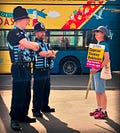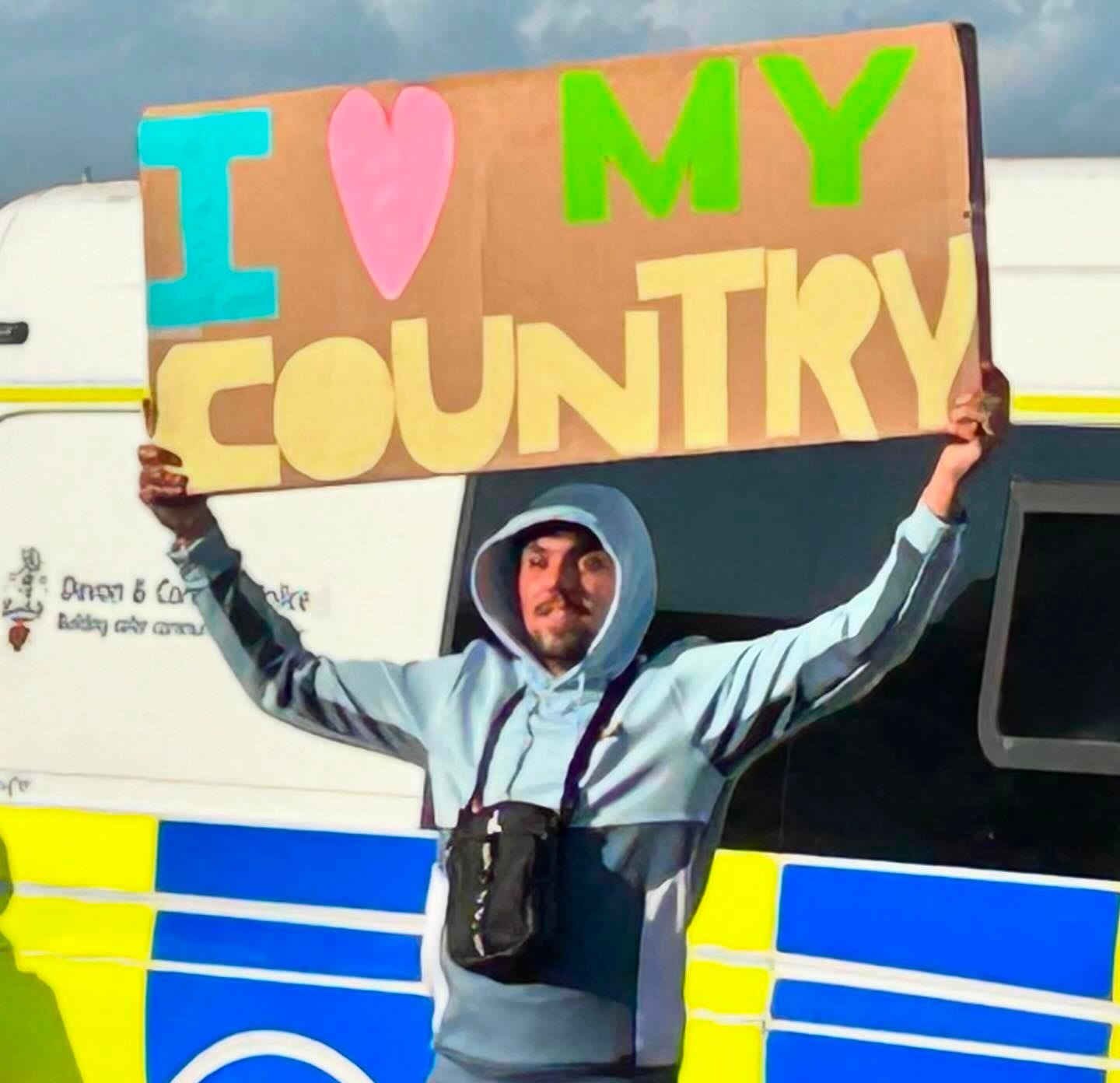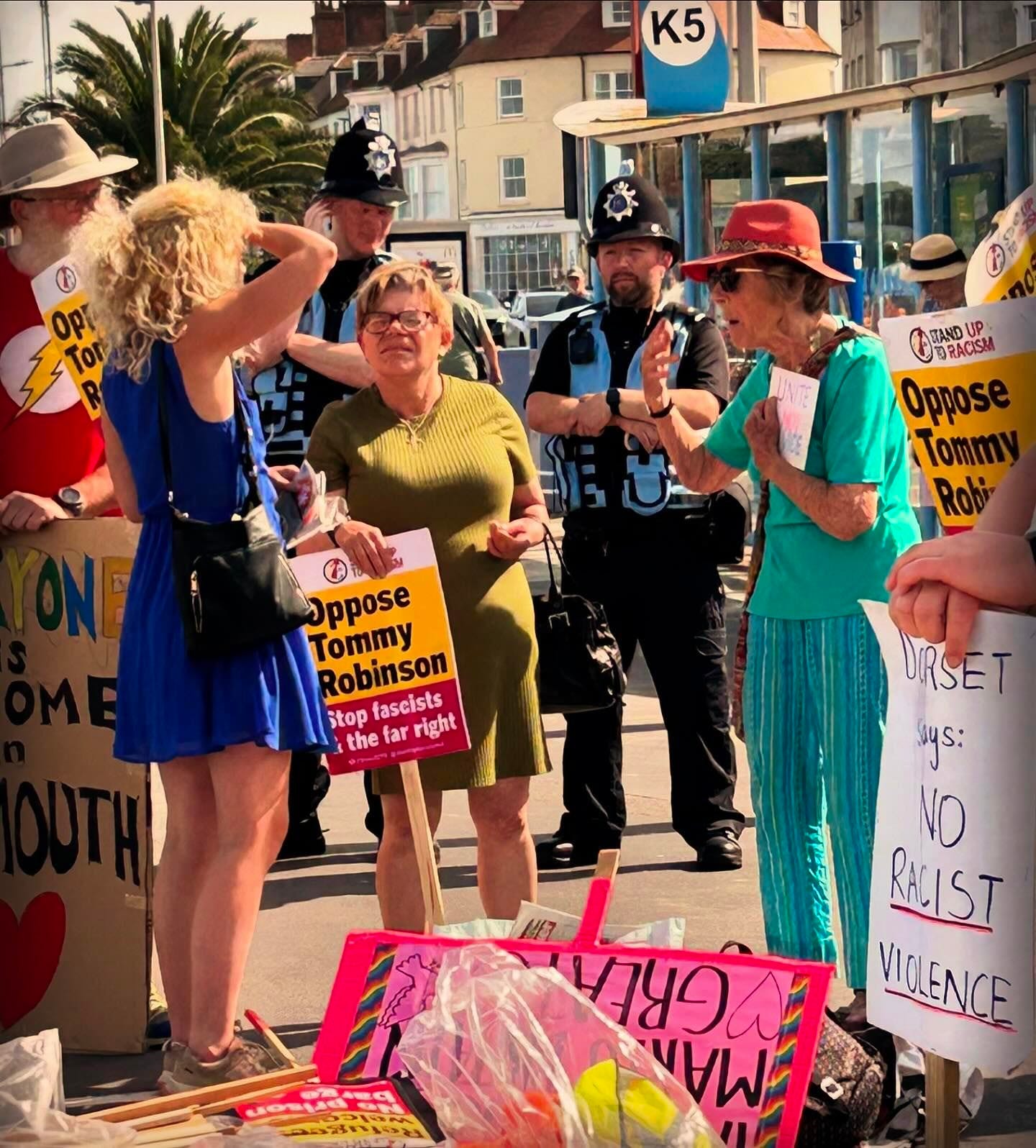A thuggish assault on the people
The post-riots rhetoric of the political elite was an attack on the masses
The possible suicide of one grandfather after being convicted of violent assault and sent down for two years. The controversial conviction and lengthier sentence handed out to the childminding wife of a Conservative councillor for tweeting horrible things. Both have provoked yet more anger over ‘two-tier’ policing and criminal justice. Indeed, I write a couple of days after a Labour MP has been suspended following the circulation on social media of footage appearing to show him assaulting a man in the street. And on the day we found out that the man suspected of carrying out the Southport atrocity isn’t your average Welshman after all.
The events in Southport were so unspeakably awful I’m surely not alone in wishing not to dwell on them. Hence the euphemism. Events. Some rightly spoke of the ordinary heroes who bravely intervened as best they could, and saved young lives that would otherwise have been lost. Pulling together in the darkest of times is a cliche I suppose. But acts of solidarity in such terrible times - the community-led clean up and repair of the mosque attacked by out-of-town rioters at a time of divisive rumours and racist violence, spring to mind - are what ordinary people do. Nevertheless, as Baroness Claire Fox observed shortly afterwards, they:
… somehow seemed less of a shock in the context where many feel that lawlessness is becoming the norm - that the police, politicians and mainstream commentators seem either indifferent to society spiralling out of control or are powerless to prevent it.
It was both shocking then, and grimly familiar. The labelling of any wish to dig further, or of the understandable expressions of anger, as ‘extremist bigotry’ - particularly as the riots followed - could hardly have been more wrongheaded. Especially when you consider the far more sympathetic response to the earlier Harehills riot in Leeds, from which the police literally ran. ‘A double-decker bus in flames. A police car flipped on its side, as adults and kids smashed its windows in. A delivery van raided; its contents set alight’, said Fraser Myers at spiked, as he summed up the rather stark demographic facts behind the rioting.
These appalling scenes speak to a spectacular failure of integration. Harehills is a deprived, diverse community, with 43 per cent of residents born outside the UK, encompassing over 80 nationalities and ethnicities. It has been described as a ‘21st-century ghetto’. Places like Harehills are almost hermetically sealed off from wider British society.
The violence in Harehills was triggered by social services removing a child from a Roma family. But, as Rod Liddle explains, the immigration policy of the previous coalition government, by being far more obliging to the EU than it was to the people of Leeds, surely had the bigger role to play? It seems to me that the authorities as a whole put no thought at all into the consequences of treating people - both the natives and the newcomers - with such neglect. What is the policy for ensuring new settlers don’t unsettle communities, or have an impact that is to the detriment of those already living in the neighbourhoods onto which they are so callously dumped? Is there any thought given to how they might be integrated to avoid explosive incidents like these?
The riots after Southport were more widespread and of a quite different character. The Spectator summed them up as follows:
A week of riots, with violence against the police, threats to Muslims, burning of vehicles and looting (Greggs, Shoezone, Sainsbury’s Local) broke out in Liverpool, Sunderland, London, Hartlepool, Manchester, Hull, Aldershot, Stoke-on-Trent, Bristol, Bolton, Tamworth, Portsmouth, Weymouth*, Leeds, Rotherham, Middlesbrough, Nottingham, Blackpool, Plymouth and Belfast.
Tom Slater at spiked observed that ‘the public will not be easily silenced this time’. Because ‘working-class people can see society unravelling while politicians just mouth platitudes’. From knife crime to terrorist attacks, there is elite indifference and a reluctance to address anything that might be ‘difficult, expensive or – worst of all – politically incorrect’. An ‘inept, virtue-signalling political class has abdicated its responsibility for protecting the citizenry’, he concluded. But as Claire Fox rightly pointed out, the government soon showed itself to be not at all shy about clamping down not only on actual rioters, but on anybody loosely associated with it, even if they just said something inadvisable online.
As Fox argued, whether they’re right or wrong, people have ‘legitimate questions’ that are not being answered:
It should be acceptable to ask if undocumented young men arriving on small boats present a threat; to raise worries about immigrant communities that seem unwilling to integrate into British society; to query if there is a relationship between Islamists pledging support for Hamas and Islam as a religion.
As Katy Balls wrote, Starmer ‘faced accusations of being too quick to dismiss as bigotry any concerns about demographic change’. The prime minister’s now infamous remarks - ‘I won’t shy away from calling it what it is – far-right thuggery’ - only confirmed that he didn’t know ‘what it is’. As several commented, we needed to better understand the social conditions that gave rise to the riots; rather than blame them on virtually non-existent fascist elements. It wasn’t all whipped up online either as the prime minister unconvincingly claimed. A lack of curiosity as to what had allowed things to spiral so badly out of control, and his authoritarian determination to shut down any debate, made matters worse and showed contempt for ordinary people.
Speaking shortly after the riots, Starmer had developed his ‘far right’ lie, and used it to put forward this far from convincing explanation of why they happened:
They exposed the state of our country. Revealed a deeply unhealthy society. The cracks in our foundation laid bare – Weakened by a decade of division and decline. Infected by a spiral of populism … Which fed off cycles of failures … [The rioters] saw the cracks in our society after 14 years of populism and failure - and they exploited them.
Education Secretary Bridget Phillipson doubled down on her boss’s politically convenient, insight-free take with her message to schools at the start of the new term:
These were shocking and criminal acts of racism and Islamophobia … Your students will have been affected too, especially those from minority communities and of the Muslim faith … These events are a deeply powerful reminder of the importance of education – to help people tell truth from lies, encounter and understand those from different backgrounds, and grow strong and inclusive values.
She described how the previously announced ‘curriculum review will develop plans to embed critical skills in lessons to arm our children against the disinformation, fake news and putrid conspiracy theories’ . As the government has been busy constructing it’s own misleading narrative on the riots, I don’t hold out much hope of this being any different. Old and young, we are being asked to swallow a lie and keep our mouths shut.
Brendan O’Neill described one now infamous incident in Birmingham, during that week of multi-faceted anger and violence. It featured ‘hundreds of British Muslim men and youths – most of them masked up, some carrying weapons’ wandering around the streets allegedly defending their mosque from a far right protest. As with the fascist protest in Walthamstow I spoke about previously, it never materialised. Some, ‘armed with a metal pole’ chased after an LBC journalist, another interrupted a live Sky News broadcast making gun gestures and stabbing the tyres of the broadcasters’ van. Another man received serious injuries after being brutally beaten again by young men in masks outside a pub as those inside barricaded themselves.
I’m a Brummie, and Gus Carter’s account of his visit to the neighbourhood where the violence took place, rings true. I got the impression from his Spectator piece that he was describing less a community than a fractured place occupied by people who happen to be living in long neglected areas. Tolerating each other for the most part but living quite parallel lives. Anyway, there were no arrests. Indeed, there was barely a police presence at all. ‘Do the authorities hold British Muslims to a lower moral standard’ asked O’Neill, ‘as if they are childlike, semi-citizens who know not what they do?’. Are the government so scared of what it might do to ‘community tensions’, that they won’t condemn those who engage in such intimidation and brutality?
Why else did they do everything they could to accuse any dissenting voices of bigotry or fascism? Fraser Myers argued that the scope of the clampdown wasn’t just on actual violent bigots, but was to ‘rapidly become a pretext for constraining the liberties of the many’. Or as Douglas Murray put it: ‘the same police forces that have not solved a burglary in half of the country for years are now policing unwise things people are saying online.’ Tom Slater made clear why free speech is so essential to us actually being able to make sense of those ‘events’. Instead, there was a state-led attempt to ‘sabotage the truly open, fear-free debate we need to work out how the hell we got ourselves into this mess’.
David Goodhart wrote an opinion piece that captured well peoples’ frustrations. The ‘political attempts to suppress widely held sentiments’ are bound to fail, he said. Where are the ‘talks with community leaders’ that were such a feature of the response to the riots in the 1980s and in 2011? As Tim Black argued, when rioters destroyed their own communities in London and beyond, and when Black Lives Matters protestors took to the streets more recently, today’s anti-riot squad were ‘justifying and even extolling the virtues of rioting mobs’.
As Douglas Murray explains, 2011 was understood as a consequence of the deprivation that followed the global financial crisis in 2008, rather than as a consequence of what one dissenting riots panel member referred to as ‘an epidemic of father absence’. At least there was an acknowledgement that it had social causes - whatever they might be. This time it took minority voices like Goodhart to make the point that the resentment that the poorest of the white working class feels ‘finds a sympathetic echo in a much wider stratum of society’. ‘Large swathes of the country’ he says ‘are sustained by welfare payments, the public sector and the everyday economy of retail and hospitality’. These are the places where they rioted.
The spasm of fury eventually fizzled out:
Riots subsided after 7 August, a night when many were expected but only empty streets or demonstrations against riots eventuated. By 12 August there had been 975 arrests and 546 charges in 36 of the 43 police force areas in England and Wales.
These figures continued to rise over the following days, weeks and months.
But according to Camilla Tominey, echoing the words of Fox and Slater, it wasn’t just the riots that were violent. There is a ‘new element of fear in Britain today; a feeling that things aren’t as safe as they used to be; that the social fabric is fraying’. The disorder of the riots echoing the disorder in people’s everyday lives. She talks about a rise in offences committed by young people, including carrying knives, offences against the person and violent robberies. As Tominey rightly notes, this trend coincides with big rises in school suspensions and exclusions. ‘Lockdown’ she observes, ‘abandoned a generation to their own devices – literally’. There has been, she says, a ‘collapse in authority’.
While social deprivation no doubt has a part to play, it doesn’t explain away anti-social or criminal behaviour. The same month as the riots, in an unconnected incident, an 11-year-old girl (on holiday with her family) was stabbed by a Romanian, reportedly homeless, man in Leicester Square in London. He was later charged with attempted murder. In another incident, again unconnected to the riots, footage of men fighting with machetes on Southend seafront (where I used to work the rides) went viral on social media. It happened again just last month. Indeed, there are too many of these kinds of incidents to mention. We have become so desensitised to savage acts of violence in our communities that it has become a kind of norm.
Last month, a very frail elderly Asian man, Bhim Sen Kohli, died after being attacked by youths while walking his dog near his home in Leicester. The police arrested four young people, two of them 12 years old, and a 15 year old appeared in court last week charged with his murder. They referred themselves to the watchdog as Mr Kohli had previously complained of youths sitting on a neighbour’s roof, spitting and throwing rocks at him. ‘We’ve lived here for 40 years’ explained his devastated daughter, ‘and just recently there’s been a lot of anti-social behaviour, which has been reported to the police’. The implication being that nothing was done. But what was most striking, I think, was how neighbours - some of whom commented on how lovely he was - apparently did nothing about it either. According to The Telegraph:
One neighbour of Mr Kohli, who asked not to be named, said of a group of children who had been causing trouble on the street: “They’ve been playing up late at night. My friend said they were throwing stones at this Asian man.”
I can understand why neighbours acted - or rather failed to act - as they did. Maybe they were scared of the kids, or allowed themselves the excuse that the police would deal with it. But what goes on in our communities is our concern. This idea that misbehaving kids in your neighbourhood are for somebody else to deal with is itself anti-social. The violent outbursts across the country should be condemned as ill-advised at best and murderous at worst. But they were, for the most part, the expression of understandable distress at those butchered girls, and drew on the long-standing neglect which many felt. We need to stand up to those who trash our neighbourhoods, be they rioters, unruly youth or the thuggish authorities .
*Incidentally, I was on holiday in Weymouth, listed amongst those places that saw riots. As the photos I took show, there was a protest and a counter-protest. But no riot.




